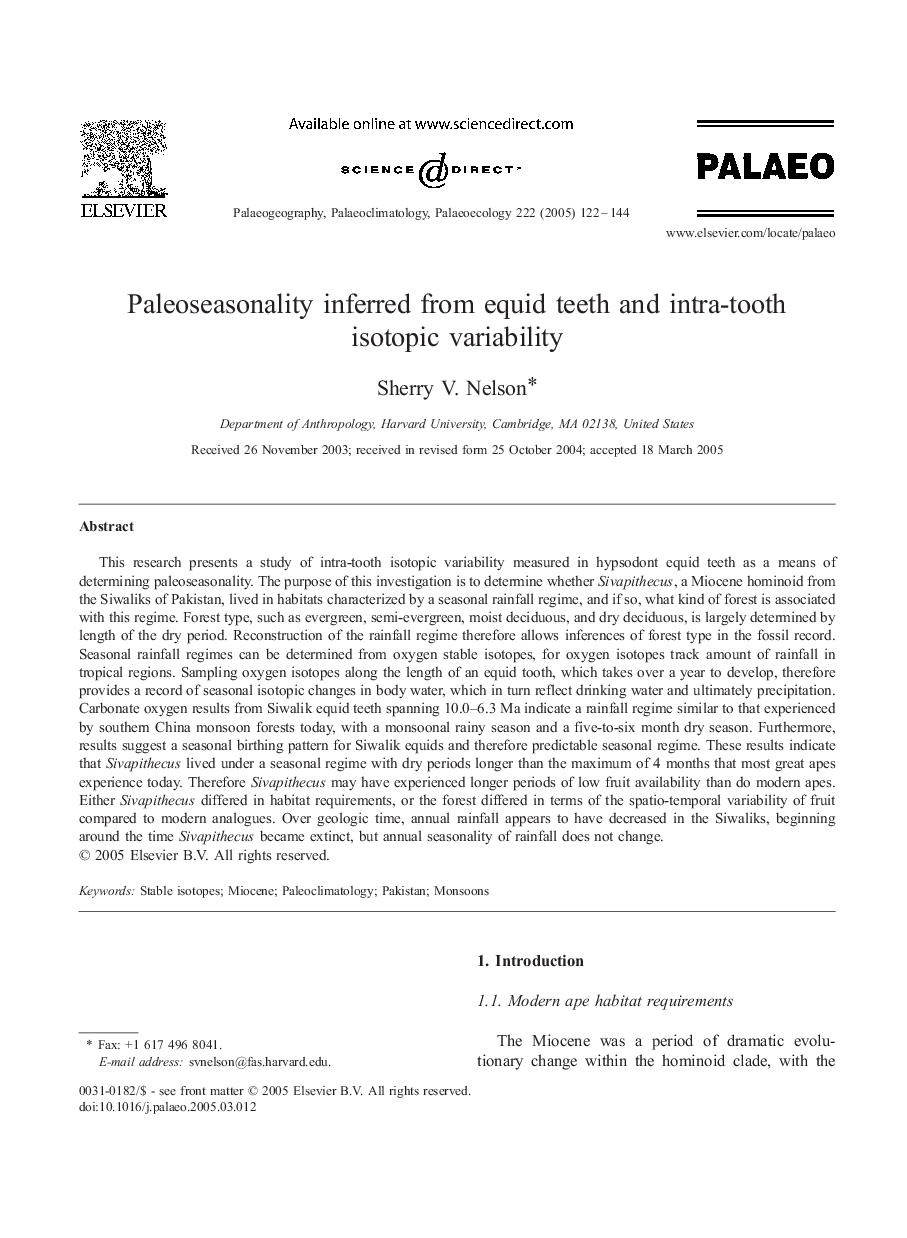| کد مقاله | کد نشریه | سال انتشار | مقاله انگلیسی | نسخه تمام متن |
|---|---|---|---|---|
| 9463149 | 1622393 | 2005 | 23 صفحه PDF | دانلود رایگان |
عنوان انگلیسی مقاله ISI
Paleoseasonality inferred from equid teeth and intra-tooth isotopic variability
دانلود مقاله + سفارش ترجمه
دانلود مقاله ISI انگلیسی
رایگان برای ایرانیان
کلمات کلیدی
موضوعات مرتبط
مهندسی و علوم پایه
علوم زمین و سیارات
فرآیندهای سطح زمین
پیش نمایش صفحه اول مقاله

چکیده انگلیسی
This research presents a study of intra-tooth isotopic variability measured in hypsodont equid teeth as a means of determining paleoseasonality. The purpose of this investigation is to determine whether Sivapithecus, a Miocene hominoid from the Siwaliks of Pakistan, lived in habitats characterized by a seasonal rainfall regime, and if so, what kind of forest is associated with this regime. Forest type, such as evergreen, semi-evergreen, moist deciduous, and dry deciduous, is largely determined by length of the dry period. Reconstruction of the rainfall regime therefore allows inferences of forest type in the fossil record. Seasonal rainfall regimes can be determined from oxygen stable isotopes, for oxygen isotopes track amount of rainfall in tropical regions. Sampling oxygen isotopes along the length of an equid tooth, which takes over a year to develop, therefore provides a record of seasonal isotopic changes in body water, which in turn reflect drinking water and ultimately precipitation. Carbonate oxygen results from Siwalik equid teeth spanning 10.0-6.3 Ma indicate a rainfall regime similar to that experienced by southern China monsoon forests today, with a monsoonal rainy season and a five-to-six month dry season. Furthermore, results suggest a seasonal birthing pattern for Siwalik equids and therefore predictable seasonal regime. These results indicate that Sivapithecus lived under a seasonal regime with dry periods longer than the maximum of 4 months that most great apes experience today. Therefore Sivapithecus may have experienced longer periods of low fruit availability than do modern apes. Either Sivapithecus differed in habitat requirements, or the forest differed in terms of the spatio-temporal variability of fruit compared to modern analogues. Over geologic time, annual rainfall appears to have decreased in the Siwaliks, beginning around the time Sivapithecus became extinct, but annual seasonality of rainfall does not change.
ناشر
Database: Elsevier - ScienceDirect (ساینس دایرکت)
Journal: Palaeogeography, Palaeoclimatology, Palaeoecology - Volume 222, Issues 1â2, 21 June 2005, Pages 122-144
Journal: Palaeogeography, Palaeoclimatology, Palaeoecology - Volume 222, Issues 1â2, 21 June 2005, Pages 122-144
نویسندگان
Sherry V. Nelson,